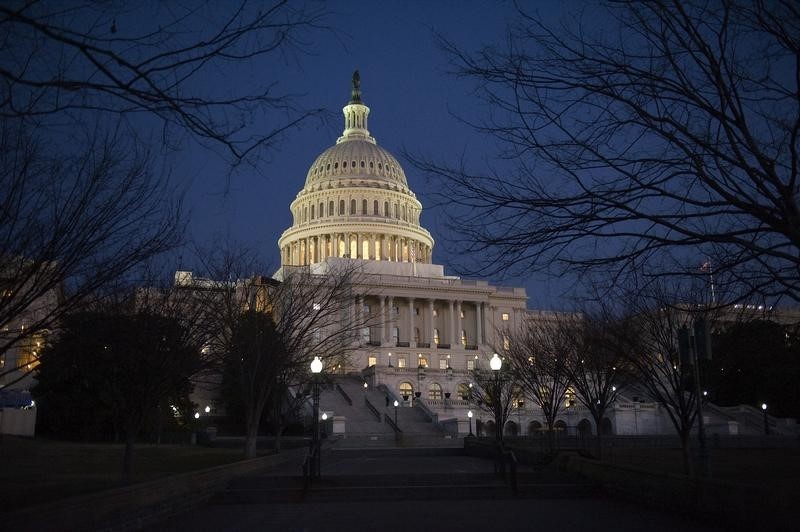By David Lawder
WASHINGTON (Reuters) - The coronavirus pandemic has pushed the U.S. federal budget deficit above $3 trillion for the first 11 months of fiscal 2020, more than doubling the previous full-year record, the U.S. Treasury said on Friday.
The budget deficit for August was $200 billion, matching the deficit in August 2019 but lower than the $245 billion forecast by analysts in a Reuters poll. However, $55 billion worth of benefit payments were shifted into July because August started on a weekend.
The $3.007 trillion year-to-date deficit was nearly triple the $1.067 trillion deficit for the comparable year-ago period, spurred by a massive increase in government spending to battle the economic fallout from the pandemic.
The previous 11-month deficit record was $1.37 trillion, reported by the Treasury in August 2009 during the financial crisis and recession. The full fiscal 2009 deficit totaled $1.4 trillion.
Concerns about ballooning deficits have stoked opposition by some Republicans in Congress to spending trillions of dollars more on a new round of coronavirus aid programs. This has helped to stall negotiations between Democrats and the Trump administration.
The non-partisan Congressional Budget Office has projected the full-year 2020 U.S. deficit to reach $3.3 trillion, or 16% of GDP, the highest share since the end of World War Two.
August budget outlays were $423 billion, compared with $428 billion in August 2019 and $626 billion in July 2020. Labor- related outlays, largely unemployment benefits, fell to $55 billion in August from $110 billion in July after a $600-a-week federal unemployment supplement expired on July 31.
Receipts in August were $223 billion, compared with $228 billion in the year-earlier period. While taxes collected from paycheck withholdings fell by $11 billion from a year earlier, non-withheld tax payments were up $4 billion due to a processing backlog from the delayed July 15 tax deadline, a Treasury official said.
Earnings from the Federal Reserve soared in August by $5 billion compared with a year earlier from earnings on the Fed's massively expanded bond holdings and lower interest payments on bank reserves.
The Treasury's interest costs on public debt rose $7 billion in August compared with a year earlier as borrowing expanded massively. But debt costs were $53 billion lower for the first 11 months of 2020 versus a year earlier due to lower interest rates.
